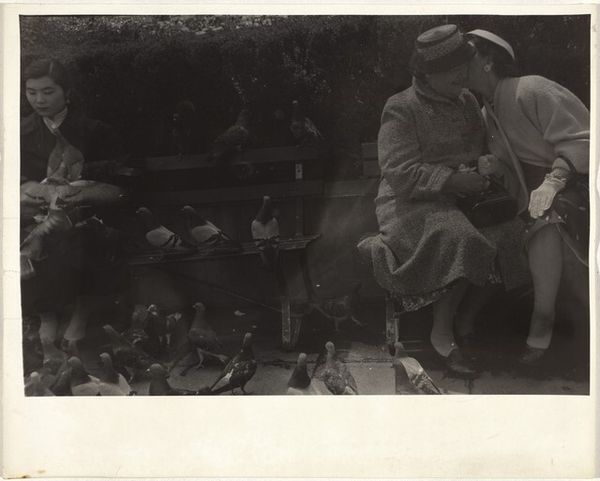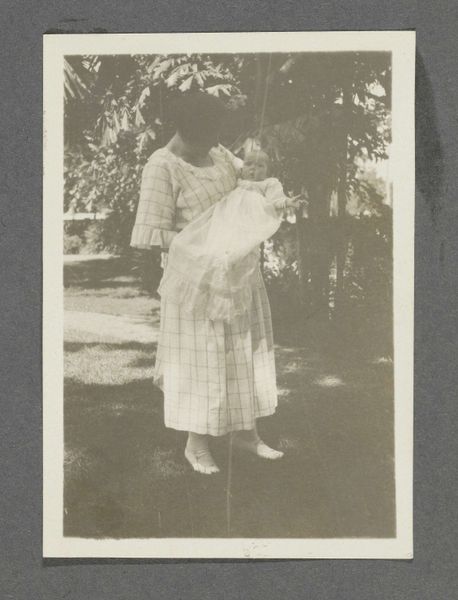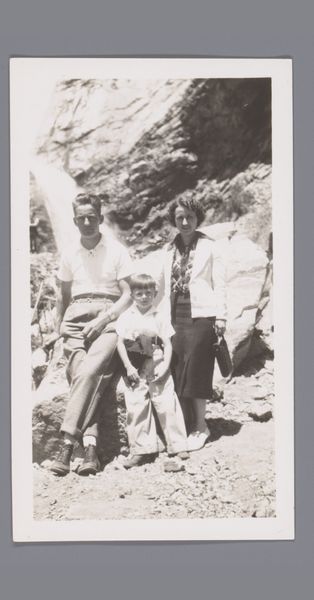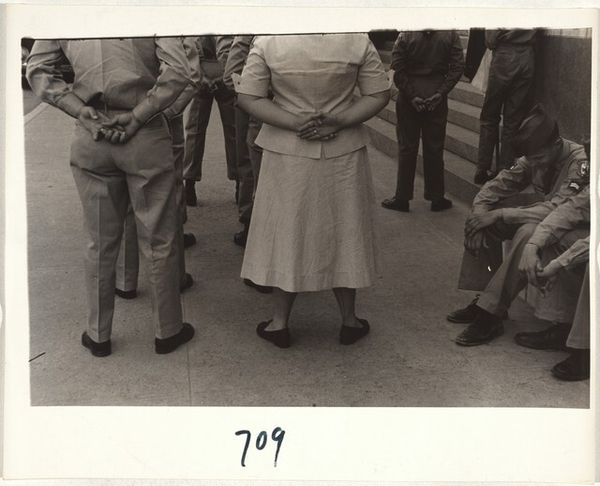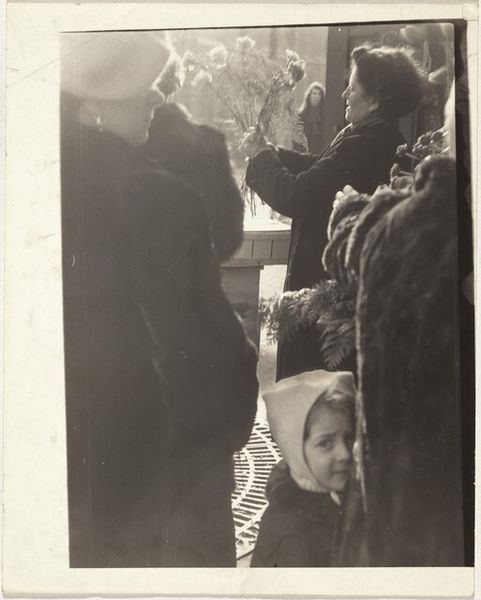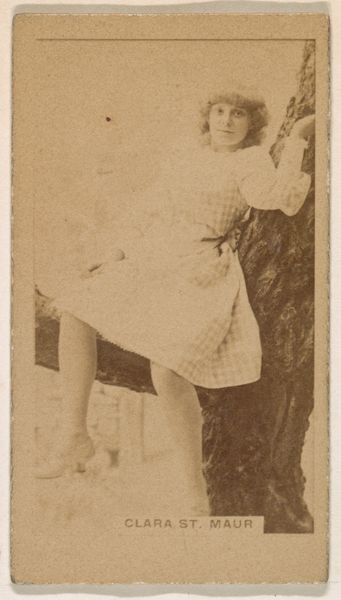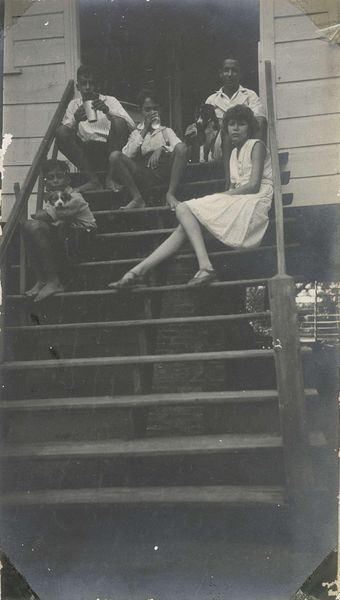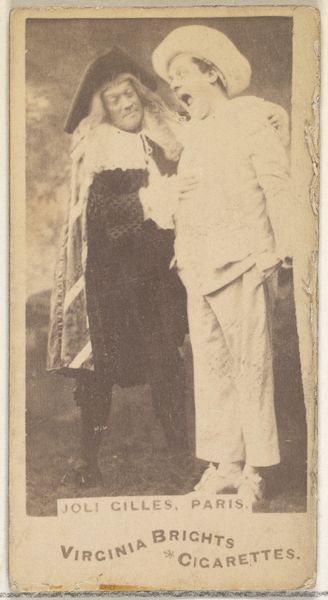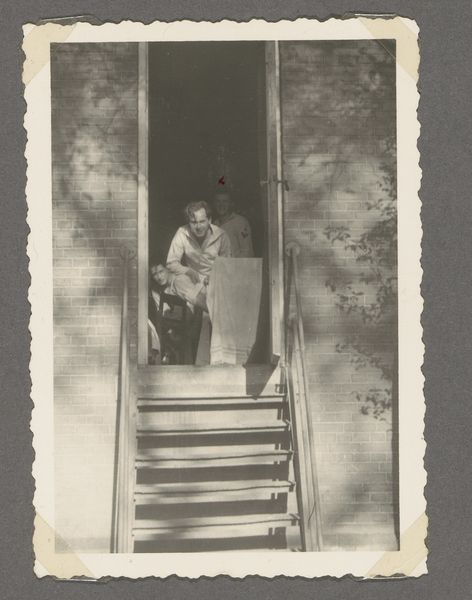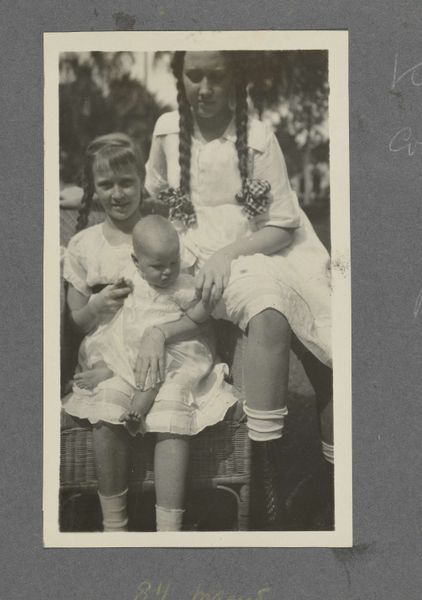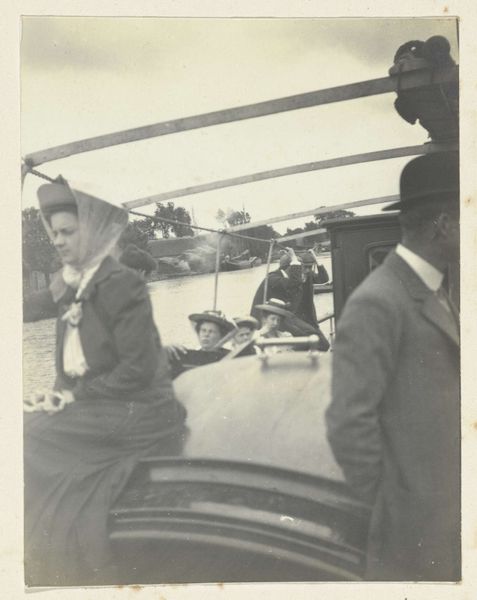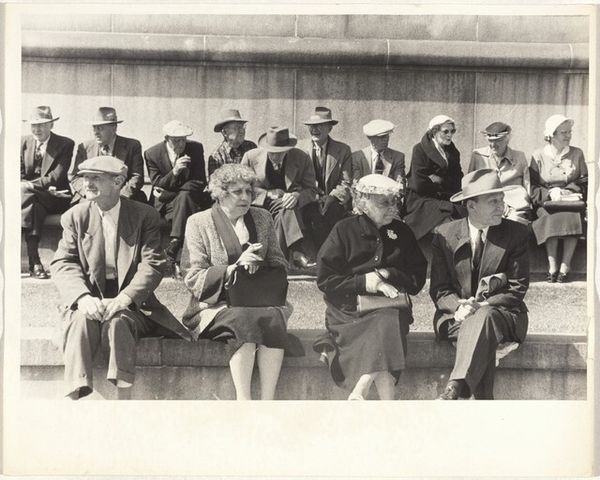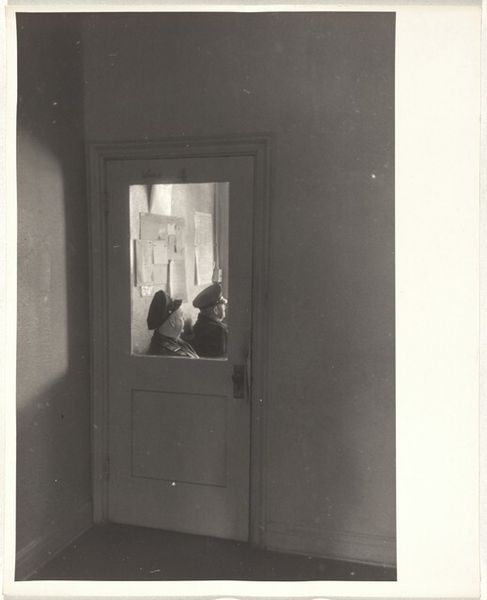
print, photography, gelatin-silver-print
# print
#
archive photography
#
street-photography
#
photography
#
historical photography
#
gelatin-silver-print
#
realism
Dimensions: sheet: 25.3 x 20.3 cm (9 15/16 x 8 in.)
Copyright: National Gallery of Art: CC0 1.0
Editor: We’re looking at Robert Frank’s gelatin silver print, *Fourth of July—Jay, New York,* from 1956. It captures a family or group of people at an outdoor gathering. The high contrast and slightly blurry effect gives it a documentary, almost snapshot feel. What strikes you most about this image? Curator: For me, the photograph raises interesting questions about how we construct and perform national identity, particularly in the post-war era. Frank, a Swiss immigrant, provides an outsider's perspective. Editor: In what ways does he seem to be reflecting on the nature of identity here? Curator: Consider the context. 1956: post-war, burgeoning consumerism, anxieties about conformity… This Fourth of July scene seems far from celebratory. Frank’s photograph, as part of his larger work "The Americans," challenged the idealized imagery of the time. Editor: So, you're saying he wasn't necessarily trying to show the glory of the holiday? Curator: Exactly. He shows us something more ambiguous. Look at their expressions – are they joyous? Detached? There’s a certain ambiguity to their collective mood and perhaps to the concept of collective celebration. The photograph raises the question: who is really included in the American ideal, and who is left on the periphery? Editor: I hadn’t considered it that way before, but the way the figures are cropped definitely adds to the sense of them feeling distanced or on the edge of something larger. It makes me wonder about what was left out of the frame, or even left out of the American dream. Curator: Precisely! It highlights the socio-political undertones present even in everyday celebrations and makes you realize Frank wasn't merely documenting; he was actively questioning. Editor: This has completely changed my view of the image. Now it makes me think about whose version of history gets told. Thanks for that insight.
Comments
No comments
Be the first to comment and join the conversation on the ultimate creative platform.
